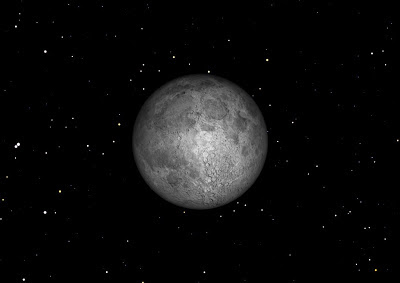Moon Phases
Fri., January 4, 10:58 p.m. EST
Last Quarter Moon
The last or third quarter moon rises around midnight and
sets around noon. It is most easily seen just after sunrise in the southern
sky.
Fri., January 11, 2:44 p.m. EST
New Moon
The moon is not visible on the date of new moon because it
is too close to the sun, but can be seen low in the east as a narrow crescent a
morning or two before, just before sunrise. It is visible low in the west an
evening or two after new moon.
Fri., January 18, 6:45 p.m. EST
First Quarter Moon
The first quarter moon rises around 11 a.m. and sets around
1 a.m. It dominates the evening sky
Sat., January 26, 11:38 p.m. EST
Full Moon
The full moon of January is called the Wolf Moon. Its Cree
name is Gishepapiwatekimumpizun, meaning “moon when the old fellow spreads the
brush.” Other names are Moon After Yule, Ice Moon and Old Moon. In Hindi it is
known as Paush Poornima. Its Sinhala (Buddhist) name is Duruthu. The full moon
rises around sunset and sets around sunrise, the only night in the month when
the moon is in the sky all night long. The rest of the month, the moon spends
at least some time in the daytime sky.
Observing Highlights
Thu., January 3, midnight–dawn local time
Quadrantid meteor shower
One of the finest meteor showers of the year, though a
waning gibbous moon will interfere with the view. The Quadrantids take their
name from an obsolete constellation, Quadrans Muralis, now part of Boötes.
Thu., January 10, sunrise
Venus and the Moon
Venus and the Moon will be in a close conjunction low in the
southeast at sunrise. Because Venus is on the far side of its orbit, heading
towards superior conjunction with the Sun on March 28, it will be 95%
illuminated, while the Moon, just a day away from New Moon, will be only 2%
illuminated.
Mon., January 21, 10 p.m. EST
Jupiter and the Moon
A close conjunction between Jupiter and the Moon, flanked by
Aldebaran and the Hyades to the left and the Pleiades to the right. The Moon
will actually pass in front of Jupiter for viewers in the South Pacific Ocean
and central South America.
Planets
Mercury will be too
close to the Sun for observation this month.
Venus is now low in
the southeast at sunrise, heading towards superior conjunction with the Sun on
March 28.
Mars has faded into
the west moving behind the sun. It moves from Capricornus into Aquarius on
January 29.
Jupiter remains in
Taurus, close to Aldebaran and the Hyades. It is high in the eastern sky at
sunset and sets in the northwest around 3 a.m.
Saturn is spends the
month in western Libra. It rises in the east at around 1 a.m., and is visible
the rest of the night.
Uranus is visible in
Pisces in the early evening and sets around 10 p.m.
Neptune is in
Aquarius all month, becoming lost in the twilight close to the Sun.
Geoff Gaherty
Starry Night Software Support
All graphics © 2013 Starry Night Software







No comments:
Post a Comment